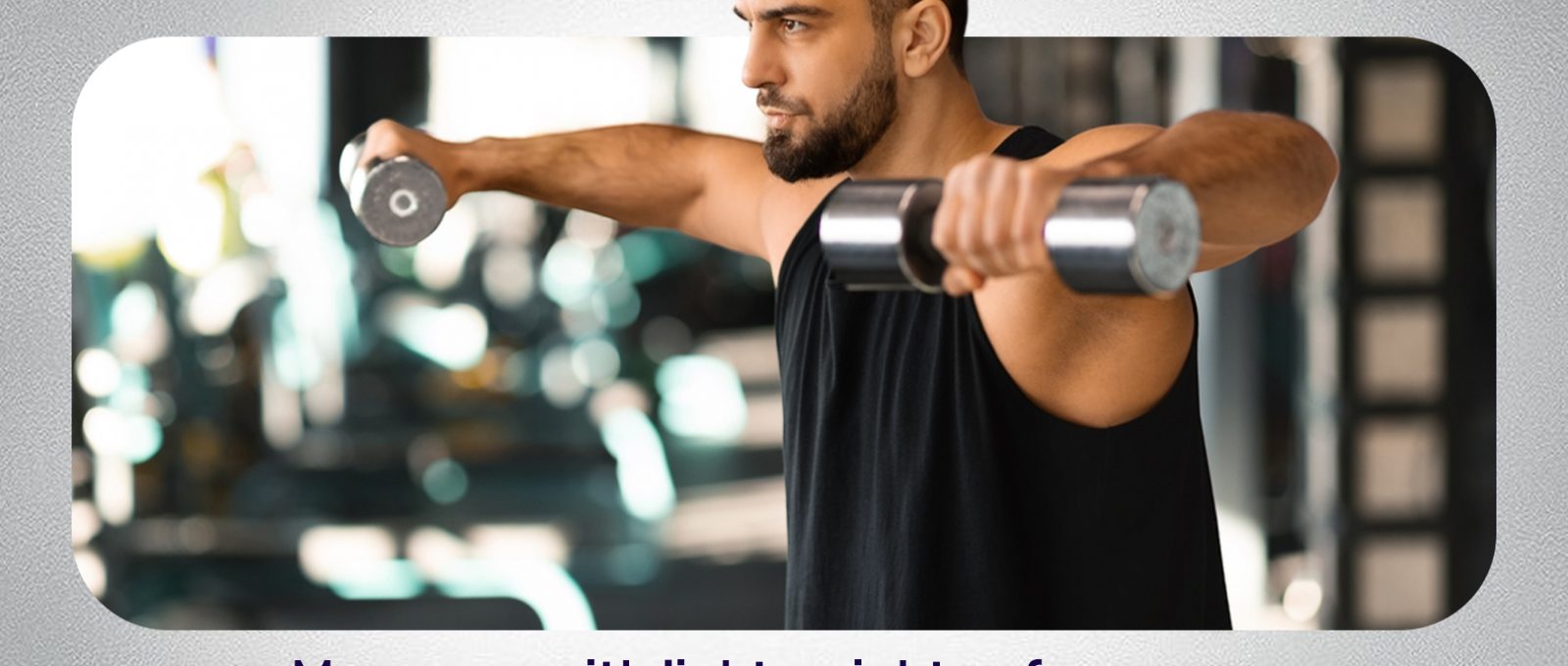Light Weights vs Heavy Weights for Muscle Growth: What’s More Effective?
When it comes to muscle growth, the debate over light weights with high reps vs heavy weights with low reps is ongoing. Which method is better for building muscle? The answer depends on your fitness goals and training approach.
Both light weights and heavy weights have distinct benefits. This guide will break down each method, helping you decide the best approach to maximize hypertrophy, strength, and endurance.

Benefits of Light Weights with High Reps
Using light weights with high reps (12-20 reps per set) can:
✅ Enhance muscular endurance – Ideal for athletes needing sustained strength over time.
✅ Increase muscle definition – Helps create a lean, toned appearance.
✅ Reduce joint strain – Lower risk of injury for beginners or those recovering from injuries.
✅ Improve metabolic rate – Keeps your heart rate elevated for fat loss.
This approach is often used in circuit training, body sculpting, and endurance workouts.
When to Use Light Weights for Muscle Growth?
- If you want to improve endurance and muscle tone.
- If you’re a beginner or focusing on joint-friendly exercises.
- If you prefer high-volume, fast-paced workouts.

Benefits of Heavy Weights with Low Reps
Lifting heavy weights with low reps (4-8 reps per set) promotes:
✅ Muscle hypertrophy – Maximizes muscle size and growth.
✅ Increased strength – Activates fast-twitch muscle fibers for power gains.
✅ Higher testosterone & growth hormone levels – Supports faster recovery and muscle repair.
✅ Efficient training – Fewer reps with heavier loads lead to shorter, high-intensity workouts.
This method is commonly used by powerlifters, bodybuilders, and strength athletes.
When to Use Heavy Weights for Muscle Growth?
- If you aim for muscle mass (hypertrophy) and strength gains.
- If you’re comfortable with compound lifts like squats, deadlifts, and bench presses.
- If you have prior experience with weight training.
Light Weights vs Heavy Weights for Muscle Growth: Which One Wins?
The best strategy? Use both!
- For muscle growth (hypertrophy), research suggests moderate-to-heavy weight training with 6-12 reps per set is optimal.
- For endurance and muscle tone, stick with lighter weights and 12+ reps per set.
- For strength and power, focus on heavier weights with lower reps (4-6 reps per set).
The Key Factor: Progressive Overload
Regardless of weight selection, progressive overload (gradually increasing resistance) is essential. If you’re not increasing weight or reps over time, muscle growth will stall.
For more blogs :
is it possible to lose fat by doing only cardio
Final Verdict: Which is Best for You?
💪 If you want strength & muscle mass → Use heavier weights with fewer reps.
🔥 If you want endurance & definition → Use lighter weights with higher reps.
📈 For overall muscle development → Combine both for a balanced approach.
By structuring your training with periodization (cycling between heavy and light training phases), you can maximize muscle growth and strength while reducing injury risk.





